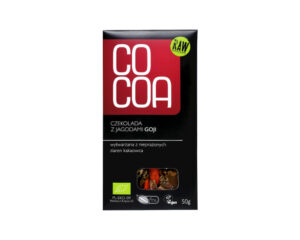Organic Ceremonial Criollo raw cocoa mass
From 9.00€
Organic Ceremonial Criollo raw cocoa mass
Criollo cacao (Theobroma cacao ssp. cacao) was cultivated by the Mayans more than 1500 years ago. Criollo cocoa was thought to originate in Central America and to have developed independently of Amazonian cocoa populations. We also need to know that the Mayans and Aztecs did not eat chocolate. The sugar needed to make chocolate did not exist in America before the Spanish. The Mayans, Aztecs and other peoples consumed drinks similar to teas or pozole, which are still produced in Mexico and Central America. These ancient civilisations not only consumed cocoa as a beverage, but also considered it sacred, using it in rituals and ceremonies. Cocoa beans were so highly valued that they were used as currency and were central to cultural and spiritual practices. Today, the tradition of ceremonial cocoa is being rediscovered as people around the world see its potential for emotional healing and spiritual connection.
Features:
Ceremonial cocoa is often associated with an emotional and spiritual heart-opening experience.
Cacao beans contain compounds such as phenethylamine (PEA), often referred to as the “love molecule” because it can stimulate the release of endorphins and dopamine in the brain, producing feelings of happiness, pleasure and even mild euphoria.
It can contribute to improved mood and well-being.
Fenhytetylamine has a mild stimulant effect that can increase alertness, which in turn can help improve concentration, making it useful for tasks requiring mental clarity. Due to its role in promoting a sense of pleasure, phenylethylamine has been associated with aphrodisiacs that enhance romantic and sensual experiences.
Cocoa is an excellent source of iron, magnesium, phosphorus, calcium, zinc, copper, manganese and selenium. High potassium levels help maintain proper blood pressure and muscle tone.
Attention! Ceremonial cocoa naturally contains caffeine and theobromine. Although smaller than coffee, people sensitive to caffeine may experience anxiety, nervousness or insomnia. Excessive consumption of cocoa can cause digestive problems, including nausea or diarrhoea, including headaches. Ceremonial cocoa may interact negatively with certain medications, especially antidepressants, so caution is advised.
Usage: 30 g of cocoa a day is more than enough. For meditation, the average recommended dose is 22-30 g. For ceremonial cocoa, 40-50g is recommended. Ceremonial doses should be taken no more than 3 times a week. More than a 50g serving may be too much, especially for those just starting out on their cocoa journey. It is very important to start with a small amount and gradually increase to find the optimal dose, as individual reactions can vary widely. Ceremonial quality cocoa is generally safe to consume during pregnancy, but large portions are not recommended. It is important to monitor the amount of cocoa consumed.
Hot cocoa:
Melt the cacao nibs in a hot bath or, after finely chopping and pouring warm (not boiling) water over them, shake them in a blender.
Can be flavoured with coconut milk powder or herbal drink.
Sweeten with your favourite sweetener and try spices – vanilla, cinnamon, cardamom, cayenne pepper.
Make chocolate at home:
Melt the cocoa mass in a hot bath with coconut milk powder or, for example, nut butters (no water or herbal drink) and pour into moulds.
After chilling in the fridge, you can enjoy high-quality chocolate.
Sprinkle it on top of your breakfast porridge, cocktail or salad.
Sources: https://cacaolaboratory.com, https://www.sciencedirect.com, https://www.thechocolatejournalist.com
NB! The information provided here should not be interpreted as a recommendation for treatment or other types of health problems. We encourage you to make personal health decisions after evaluating different sources of information.
100% organic ceremonial Criollo cocoa mass
Energy value 656,4 kcal
Fats 55,64 g
- of which saturated fatty acids 36,15 g
Carbohydrates 25,24 g
- of which sugars 0,7 g
Fibre 15,03 g
Protein 55,64 g
Keep tightly closed and out of direct sunlight.











